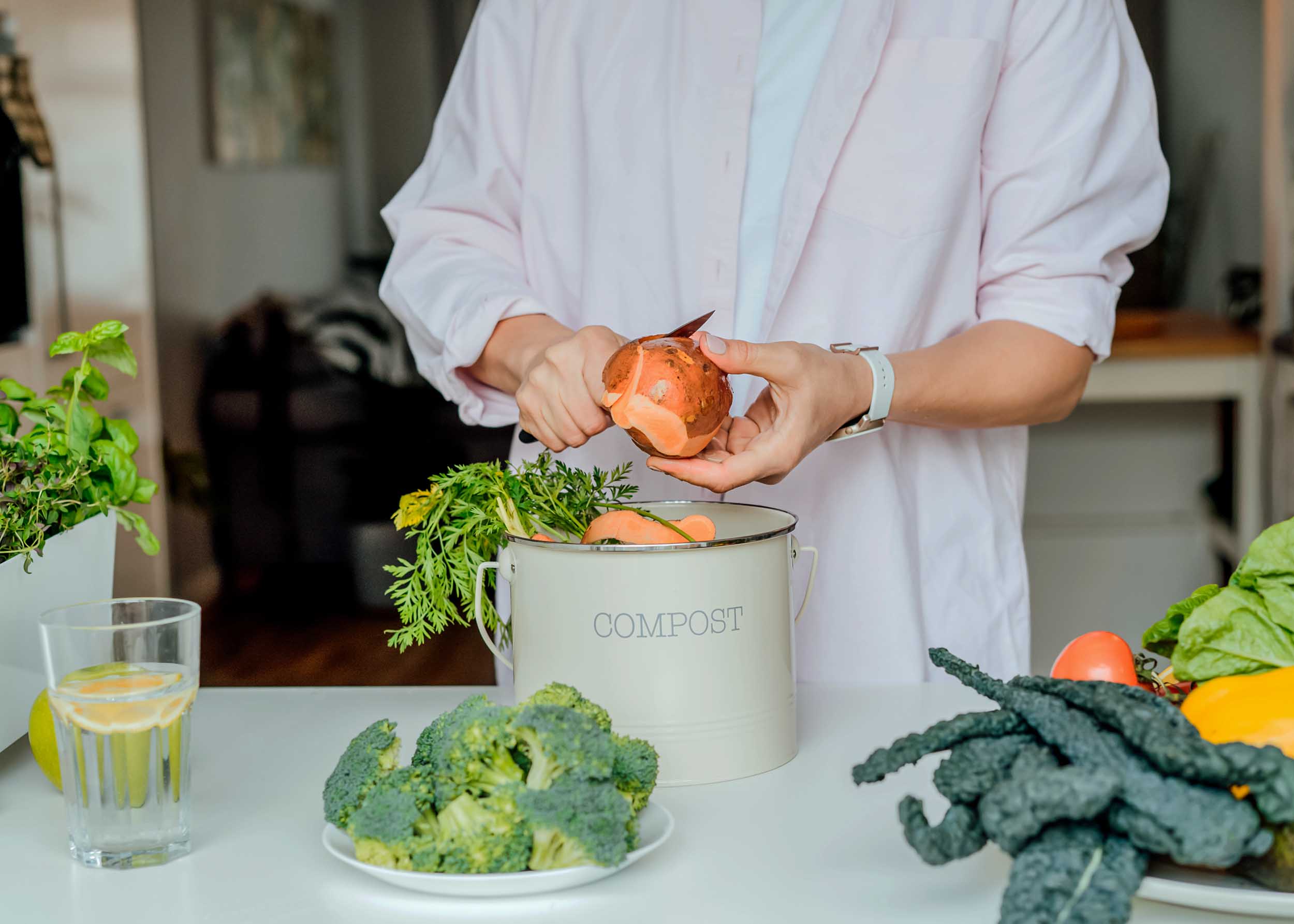Often, the parts of the vegetables we leave behind – the onion peels, carrot tops, and celery ends – are considered waste, destined for the compost pile or, worse, landfill. But what if I told you these overlooked scraps are a treasure trove of flavour, just waiting to be repurposed?
Creating vegetable stock from food waste is the epitome of what it means to be sustainable in the kitchen.
It’s a lost habit our grandparents employed. A generation – and all those before them – who believed in using every part of the fresh produce, leaving nothing to waste.

Waste not, want not
I have memories of my Nanna saving every last bit of oil from the previous night’s roast, with little charred crispy bits floating at the top of the jar. The shelf above the stove stacked with jars of leftover liquids and containers brimming with vegetable peels. All waiting to be repurposed in another recipe, eking out every last bit of flavour from the scraps before finally being buried in the back garden.
It was a true testament to their generation’s philosophy of ‘waste not, want not’ – one that we could do with bringing back into our cooking.
So today, I’m going to change your mind about what might have previously considered waste in the kitchen and show you how to use all those veggie scraps to make this simple, flavourful (and free!) vegetable stock.
Scrappy Vegetable Stock Recipe
Makes about 2 litres
Ingredients:
- 4 cups assorted vegetable scraps (onion skins, leek tops, carrot tops and peels, celery ends, parsley stems, mushroom stems, capsicum scraps, kale and spinach stalks)
- 2 bay leaves
- 1 teaspoon whole black peppercorns
- A small handful of fresh herbs (flat-leaf parsley, thyme, and/or rosemary)
- 1 ½ litres of water (or enough to cover the scraps)
Instructions:
- Save Your Scraps: As you cook throughout the week, save the ends, peels, and stems from your vegetables. Avoid using any vegetables that are spoiled or mouldy. You can store the scraps in an airtight container in the fridge or freezer until you’re ready to make your stock.
- Combine Ingredients: Once you’ve collected enough scraps, pop them in a large pot. Add the bay leaves, peppercorns, and fresh herbs.
- Cover with Water: Pour enough water into the pot to cover the scraps by a few centimetres.
- Simmer: Bring the pot to a boil over medium-high heat. Once it starts boiling, reduce the heat to low and let it simmer uncovered for about 1-2 hours. The longer you simmer, the more flavourful your stock will be.
- Strain: After the stock has simmered, strain it through a fine-mesh sieve into a large bowl or another pot. Chuck the scraps in the compost.
- Cool and Store: Allow the stock to cool before transferring it into jars or an airtight container.
That’s it! You’ve turned your vegetable scraps into a flavourful, sustainable homemade vegetable stock. The perfect base for soups, stews, risottos, and any other dish that calls for vegetable stock.
This will keep in the fridge for up to a week and in the freezer for up to six months. Just remember,er if you are storing in a glass jar in the freezer, to leave a few centimetres at the top to allow the liquid room to expand.


